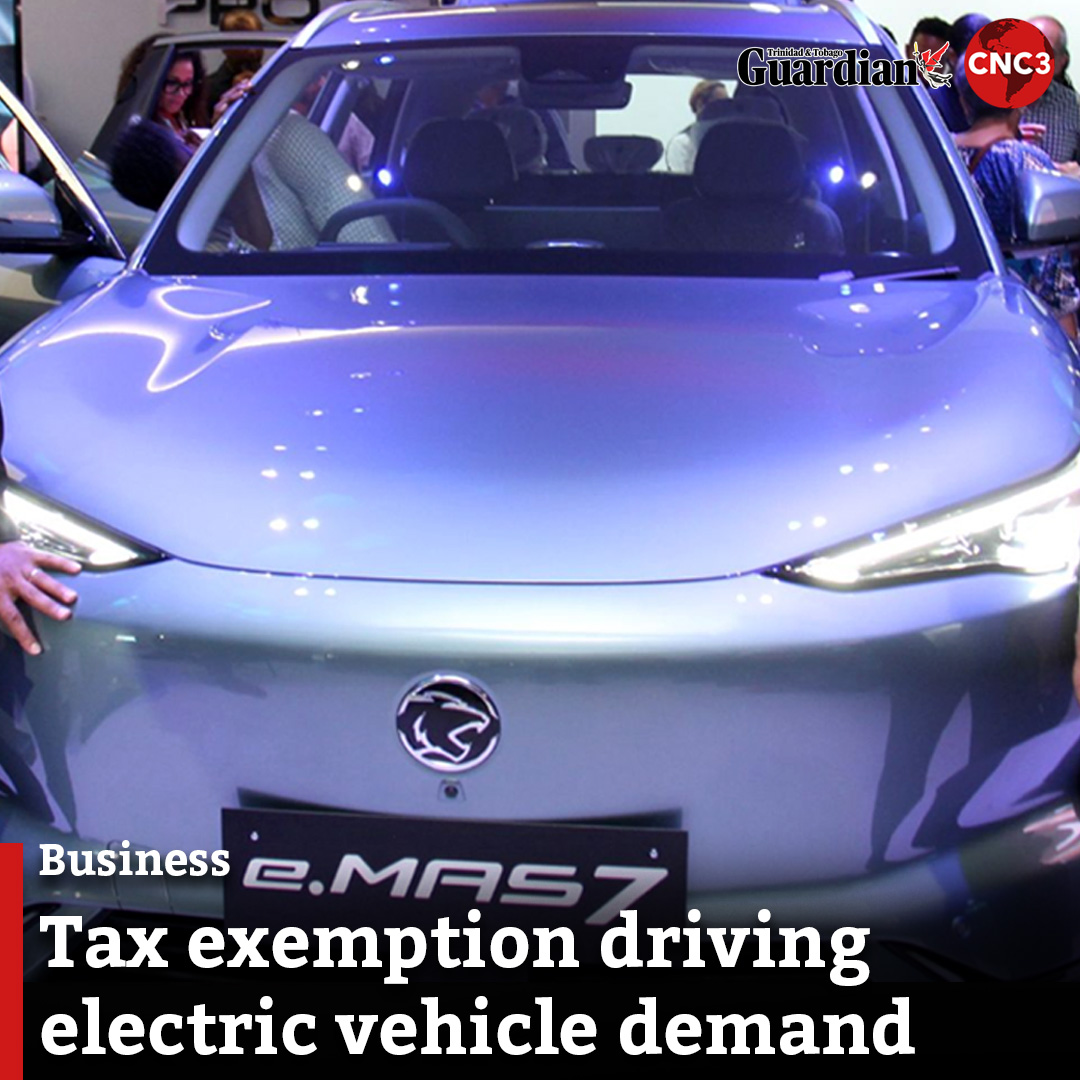
Turbocharged by Tax Breaks: Proton e.MAS7 Ignites EV Momentum in Trinidad and Tobago

In a sleek, high-energy unveiling at Grand Bazaar on Thursday evening, ANSA Motors officially launched the Proton e.MAS7, a next-generation electric vehicle (EV) that’s not only turning heads—but also accelerating Trinidad and Tobago’s transition into a more electric future. With tax exemptions giving the local EV market a massive jolt, the timing couldn’t be better for this Malaysian-made marvel.
Daryl Young, sector general manager for Core and Luxury New Vehicle Sales at ANSA Motors, spoke passionately about the shift in the local automotive landscape. Just three years ago, electric vehicles held a meager four per cent share of the national car market. Today, that number has surged to 15 per cent and continues climbing—thanks in large part to the removal of customs duty, value-added tax (VAT), and the online purchase tax on electric vehicle chargers and parts. Those exemptions, implemented in January, have started to pay off.
“The impact has been huge,” Young shared. “The tax relief on EV components has given customers the confidence to explore new, greener options.”
On launch night, the Proton e.MAS7 stood proud—gleaming under spotlights, with executives and curious visitors alike drawn to its promise of affordability, tech-savviness, and environmental responsibility. At an introductory price of $299,000 (expected to rise to $349,000), the car has been positioned as an entry-level EV for the urban commuter with modern expectations and a moderate budget.
Young explained that the Proton brand, a Malaysian staple with growing international influence, was introduced last year by ANSA Motors in both Trinidad and Guyana. “In Guyana, 70 per cent of all core brand sales are Proton,” he noted. “It’s been far beyond our expectations in both markets.”
However, the two countries find themselves at different stages in EV adoption. While Trinidad and Tobago enjoys increasing infrastructure and governmental support, Guyana still struggles with underdeveloped charging networks and lingering tax challenges. Still, Young pointed out that Guyana has removed all taxes on fully electric vehicles, even if hybrids are yet to receive the same break.
“Guyana is clearly showing they’re serious about reducing their carbon footprint,” he said.
One of the major talking points of the night centered on the e.MAS7’s viability as an alternative to roll-on, roll-off (RoRo) used cars. While acknowledging that these cheaper imports continue to appeal to a different segment of car buyers, Young emphasized that Proton’s new EV offers value that extends beyond the sticker price.
“We targeted a niche that wants something new, efficient, and modern. Young professionals are the driving force—they’re tech-savvy, environmentally aware, and keen on reliability,” he said. That market, he noted, appreciates the added incentives ANSA Motors offers, including a two-year service plan and two years of insurance bundled into the purchase price.
The EV’s maintenance costs are also refreshingly low. “It’s actually the cheapest to maintain in our entire portfolio,” Young said confidently. “We sell Honda, Ford, Mitsubishi, and others—but Proton leads the pack in operational affordability.”
Beyond maintenance, ANSA Motors has wrapped the ownership experience into a tight, one-stop-shop solution. From insurance and financing to service and warranty coverage, the buyer is promised a seamless journey into EV ownership. “Everything’s under one roof,” said Young.
But that doesn’t mean it’s all smooth driving ahead. Trinidad and Tobago’s ongoing foreign exchange crisis casts a shadow over the vehicle import sector. Like other industry players, ANSA Motors is struggling to secure the US dollars necessary to meet demand.
“We can’t bring in the volume of cars we’d like,” Young admitted. “The foreign exchange crunch is shrinking the market, and as you know, vehicle taxes are a significant revenue stream for the government. There’s a ripple effect.”
To navigate this, ANSA Motors is recalibrating its approach—bringing in fewer models but focusing on those with strong consumer demand and better margins. “We’re prioritizing smarter,” Young said.
He also addressed concerns around after-sales support for EVs, particularly around servicing and safety. Electric vehicles demand specialized knowledge, tools, and strict protocols. “You don’t just work on an EV like any other car,” he said. “Our team is certified, trained directly by Proton, and our technical director has been to Malaysia several times. We’ve invested in the right people and equipment.”
This includes creating designated zones for EV servicing, meeting strict safety standards. “That’s not optional—it’s mandatory,” he stressed.
Charging infrastructure, a key concern for prospective EV buyers, is also being expanded gradually. ANSA Motors has installed a charger at its Grand Bazaar showroom, and the company is working with certified electricians to install home charging systems. “You need a certified installer—both by us and by the government. That’s non-negotiable. Safety comes first.”
In a time when global headlines swirl around US tariffs and shifting trade policies, the Malaysian origin of Proton provides a layer of security—for now. “The 25 per cent US tariff doesn’t touch us, because we’re not sourcing from there,” Young said. “We’re watching the global picture closely, but for the moment, we’re in the clear.”
From affordability and low maintenance to environmentally conscious design and government incentives, the Proton e.MAS7 is poised to do more than just sell cars—it’s ready to reshape mindsets.
With EV demand picking up and consumers becoming more tech-forward, ANSA Motors has placed a calculated bet on a future that’s electric, accessible, and sustainable. And with their latest launch, they may have just plugged into the very heart of what Caribbean motorists are looking for in a post-gasoline world.
As electric mobility continues to spark conversations across the region, one thing is becoming abundantly clear: the road ahead is not only charged—it’s wide open.


